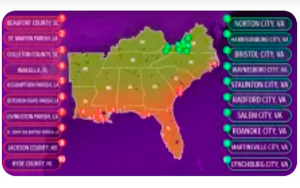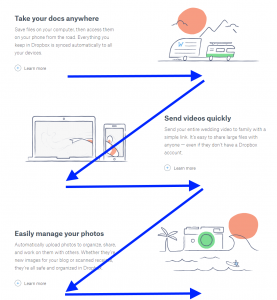
Link building used to be status quo for SEO – but Google’s ever-changing algorithms have made link building a whole new game – particularly in the AP (After Penguin) world.
Back in the day, we used to be able to purchase links from dealers and get the results, securing higher Google SERPs. Now, not so much.
It’s no longer about quantity, decreasing the ROI of purchasing links through those dealers – instead, it’s about quality. We need to build links from Google-trusted domains… a seemingly easy-sounding task that, in reality, is anything but easy. But then again, when have worthwhile and easy to do ever been synonymous?
In this article, we are looking into seven link building techniques that work in post-Penguin era.
1. Newsjacking
You know what they say: the early bird gets the worm. With newsjacking, you take advantage of that idea, scrambling to be among the first to post and comment on breaking news.
That first-to-the-scene work scores with Google, earning you a temporary boost in the Google search rankings.
The idea is that if you’re among the first to post, you’re one of a few limited sources available for a given topic – that freshness, combined with limited alternative sources works double time for you, not only getting you the high ranking, but also making you more likely to be linked to as a source.
Real life example
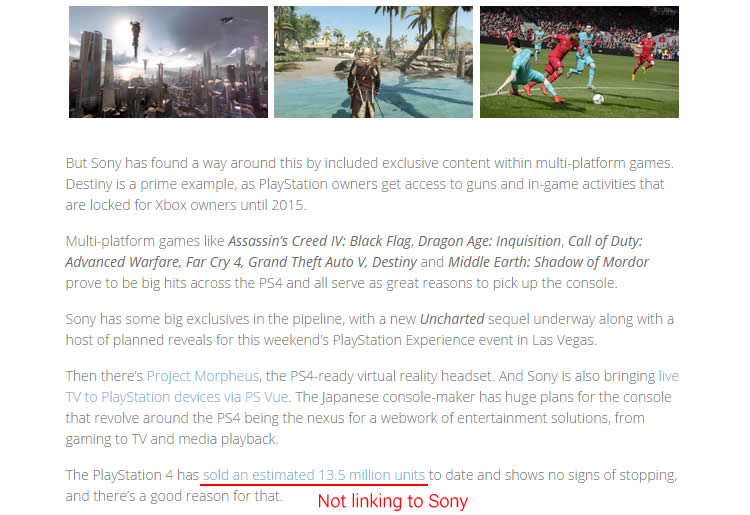
This is a screen captured from BSN – a popular news site for gamers. Note that the author is linking to Game Spot as the news source instead of the original Sony’s blog post
2. Make use of HARO
HARO – short for Help a Reporter Out is the brain child of Peter Shankman. Initially kicked off as a way to link up reporters with sources, this free resource has blossomed becoming a mainstream way to win coverage. Sameep Shah got his first link from Inc.com – a notable publication – through HARO and there are plenty of other wins in nearly every industry under the sun.
Jump on the bandwagon to receive free daily alerts and reporter requests by visiting HARO . Scroll through the listings, then send in your pitch for topics and requests relevant to your expertise. When you get the ink, you’ll likely get a link – and from plenty of top-tier, Google-loved pubs.
Real life example
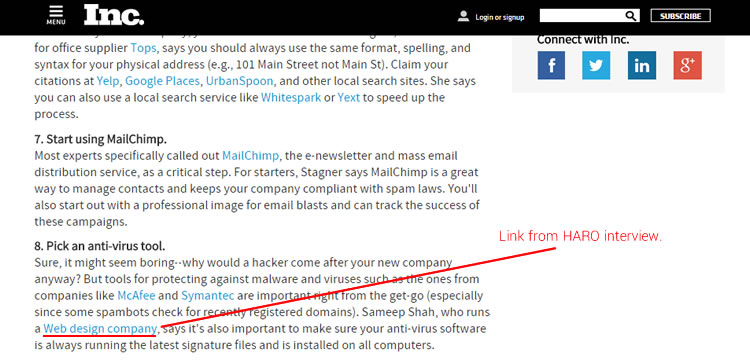
A link from Inc,? Sweet!
3. Create free tools
People are constantly looking for how-to’s on every topic under the sign – become a resource and people are likely to share that content.
There’s a reason why I have personally invested so much time and money in building WHSR Uptime Monitor: people want one. By creating this free tool and offering it to others, I’ve positioned myself as a useful resource – and, in doing so, have earned numerous link backs from other sites mentioning my free resource. The trick is to be useful and to offer something that truly fulfills a need… and, of course, to make that resource relevant to your actual blog.
Real life example
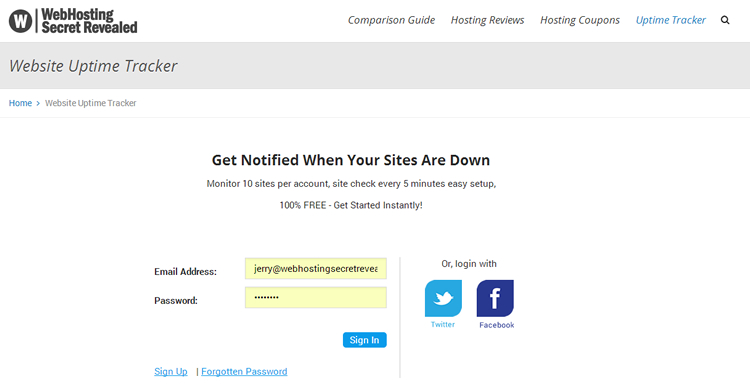
WHSR Uptime Monitor
4. Do crowd-sourcing posts
Offering insight into a topic using original data is a priceless resource. And, when you announce that insight, others in the industry are likely to want to give their own perspective – and, when they do so, they’re highly likely to link to you as the source of the data they’ll include.
For example, not too long ago, I surveyed bloggers about their own blogging mistakes. From that sourced data, I created an original post that offered unique and original insight and perspective on a topic relevant to thousands. The post received hundreds of social media shares as well as some natural incoming links. The beauty of it was that, not only did the post receive shares because it was interesting and useful to my and the social media audiences – but bloggers mentioned wanted to share it to their own audiences (and in doing so, linked back to my post from their blogs).
As with anything, there is a such thing as too much of a good thing. Be careful not to overuse this tactic, as you run the risk of losing your own voice on your blog. Like they say, all things in moderation…
5. Get visual
Infographics are all the rage, and for a good reason: they allow you to quickly and dynamically get a point across in an interesting, digestible way. Infographics and GIFs are two great ways to take things visual – and to get shareable, linkable results. Take, for example, this post that secured more than 60 links – without even asking for them. It works!
Real life example
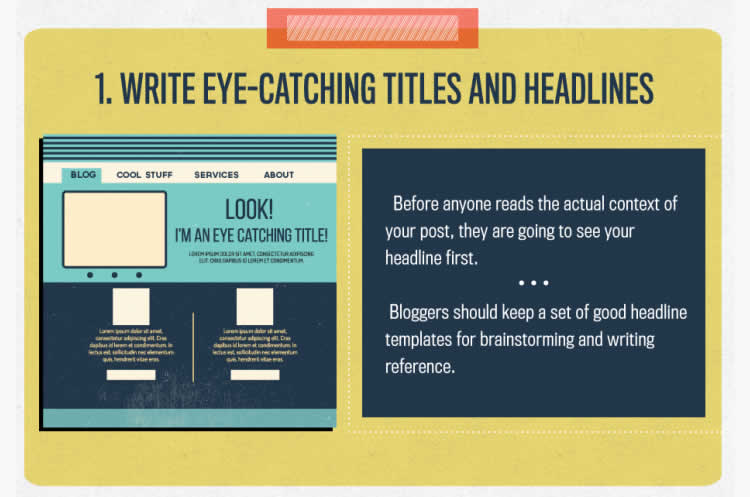
The Infographic post, 7 Must Have Elements of A Great Blog Post, has acquired more than 72 backlinks according to Majestic SEO at time of writing.
6. Write resourceful, useful articles
Be a resource and you’ll soon find yourself being mentioned (and linked back to) from other blogs and online publications. Write detailed case studies, unique 101 lists, complete exclusive interviews, and so on. But don’t leave it at just writing and publishing them, waiting for them to be discovered.
Take the next step and head into promotion, plugging your piece via social media. Additionally, reach out (smartly) to other bloggers to see if it’s something their own readers might be interested in. That outreach and proactive promotion makes all the difference in the world.
7. Guest blogging
Okay, so guest blogging in any shape or form won’t work – in fact, Google has openly attacked guest posts that were written solely for link building purposes.
However, guest posts are still among the best and most successful ways to build a blog readership and legitimate links to your blog.
Yet again, it’s about knowing how to go about it. Relevancy is huge in the AP world. so you need to be incredibly selective about the blogs that you guest post to. For one, you need to make sure that the blogs hold relevancy to your own blog, expertise, and audience. Second, you need to confirm that those blogs have an established following. Third, you need to write a really good, quality post – something well written, original, and insightful.
Real life examples
For your reference, here are some of the guest posts I did in the past 6 months for WHSR.
- The whole truth behind unlimited hosting – Guest post on Blogging Wizard in February 2014.
- 8 ways to take your blog from existence to great – Guest post on Problogger.net in December 2014.
- How to grow as if Google never existed – Guest post on Firepole Marketing in July 2014.
Now, Go Play!
Now you have my personal seven tips in link building. Time to go build some links and get some new traffics!
Caveat
As our primary focus in this article is SEO, we will discuss how link building should be done to maximize your SEO effort.
Note that, however, link building done exclusively for search engine ranking purposes is simply not a sound business idea. As one of WHSR bloggers who said it in the past –
Link Building Is Pure, Simple, Beautiful Marketing At Its Best – Luana Spinetti, 14 Reasons Link Building Belongs To Marketing
There are a lot more amazing business opportunities on top of search traffics in link building.
Digital & Social Articles on Business 2 Community
(433)


